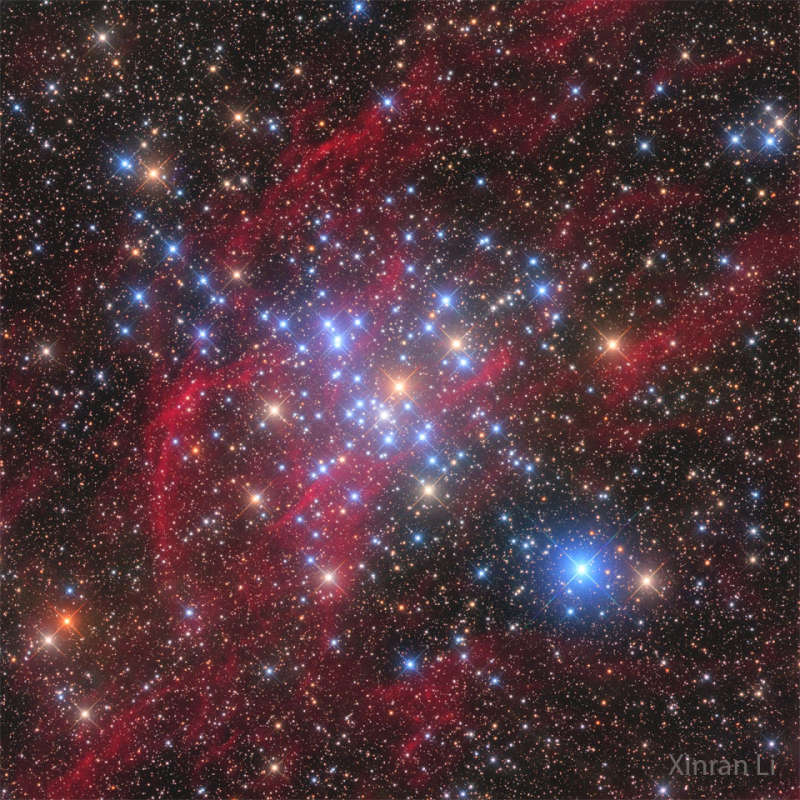
|
Credit & Copyright: Xinran Li
Explanation:
Why are there so many bright blue stars?
Stars are usually born in clusters, and the brightest and
most massive of these stars typically glow blue.
Less-bright, non-blue stars like our
Sun
surely also exist in this
M41 star cluster but are harder to see.
A few bright orange-appearing
red giant stars are visible.
The red-light filaments are emitted by diffuse hydrogen gas, a
color that was specifically filtered and enhanced in this image.
In a hundred million years or so, the bright blue stars will have exploded in
supernovas and disappeared,
while the slightly different trajectories of the fainter stars will cause
this picturesque open cluster to disperse.
Similarly, billions of years ago, our own Sun was likely born into a
star cluster
like M41, but it has long since
drifted
apart from its
sister stars.
The featured image was captured over four hours with
Chilescope T2 in
Chile.
|
January February March April May June July August September October |
| ||||||||||||||||||||||||||||||||||||||||||||||||
NASA Web Site Statements, Warnings, and Disclaimers
NASA Official: Jay Norris. Specific rights apply.
A service of: LHEA at NASA / GSFC
& Michigan Tech. U.
Based on Astronomy Picture
Of the Day
Publications with keywords: open cluster
Publications with words: open cluster
See also:
- APOD: 2025 August 7 Á The Double Cluster in Perseus
- APOD: 2025 April 28 Á Gum 37 and the Southern Tadpoles
- Open Star Clusters M35 and NGC 2158
- APOD: 2025 February 11 Á The Spider and the Fly
- APOD: 2024 October 29 Á NGC 602: Stars Versus Pillars from Webb
- NGC 7789: Caroline s Rose
- APOD: 2024 July 2 Á NGC 602: Oyster Star Cluster
